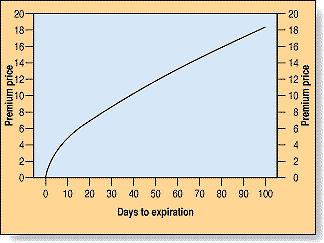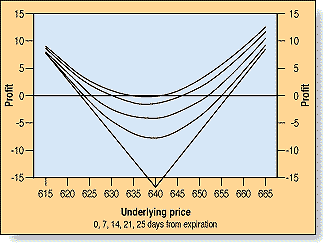"Let us define exactly what we're dealing with here. The OEX option is entirely theoretical in that its underlying price -- the OEX index -- has no intrinsic value. It is a weighted sum of the prices of 100 stocks. When you buy a call option on the OEX index and the price rises before expiration, you make money; if it falls, you lose -- as if you had bought a weighted number of shares of the 100 stocks in the index. Since there is no real underlying stock or commodity, settlements are made in cash."Options have a limited life; an option has an expiration date after which the option has no value. The OEX options are available for expirations every month, but only the four nearest months are traded at any given time.
OPTION CHOICES
"Here, now, are the choices available in trading options. You can buy a call or a put. You can sell a call or a put. You must choose a strike price, and you must choose one of four possible expiration months. Finally, you can buy any number of contracts, with each contract representing 100 times the option premium."
"Two of the most important characteristics of options are that they expire at a fixed date and that the time component of the price erodes in time. Whether you buy a put or a call, to make a profit on the trade, the expected movement of the OEX must be enough to make up for the loss in time value and the broker's commission. However, if you are a day trader, this erosion of time value will not be a factor in your decisions, because the time component of the premiums won't change much on an intraday basis.
The decline of value with time (assuming all other variables such as the underlying OEX price, interest rates and volatility are unchanged) is shown in Figure 2."

SIMPLEST STRATEGIES
The simplest combination strategy, called a buy straddle, is to buy a put and a call option of the same expiration month and strike price. The idea is that you expect the market to move but are uncertain about the direction, so you set it up to make a profit, whether the OEX rises or falls. At risk is the sum of the two premiums plus the commissions. Profit potential is theoretically unlimited in either direction (Figure 5).
